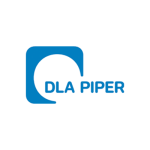On May 29 2025, the Australian Taxation Office (ATO) issued Draft Practical Compliance Guideline PCG 2025/D2, entitled “Factors to consider when determining the amount of your inbound, cross-border related party financing arrangement – ATO compliance approach” (PCG 2025/D2). The guideline sets out the ATO’s compliance approach to assessing the tax risk associated with the amount of inbound, cross-border related party debt under Australia’s transfer pricing rules.
Background
As part of the 2024 amendments to Australia’s thin capitalisation regime, changes to the transfer pricing provisions meant that general class investors and financial entities using the third-party debt test can no longer assume that the quantum of debt will be automatically accepted for transfer pricing purposes. Now, with the shift to an earnings-based thin capitalisation regime, the ATO can challenge both the amount of debt and the interest rate under the transfer pricing provisions to ensure they reflect arm’s-length conditions.
PCG 2025/D2 provides a framework for taxpayers to self-assess the risk of their inbound cross-border related party financing arrangements. It sets out factors that are relevant in determining and testing the amount of inbound cross-border related party debt, with examples illustrating how these factors are applied. Additionally, the guideline sets out the documentation and evidence the ATO expects taxpayers to prepare when determining the amount of their inbound cross-border related party debt.
Risk assessment framework
The guideline establishes a risk assessment framework that sets out the matters the ATO will take into account in deciding whether to devote compliance resources to further examine the amount of a taxpayer’s inbound, cross-border related party financing arrangement. Similar to other PCGs, the risk assessment framework is made up of four risk zones:
White zone (further risk assessment not required) – arrangements that have already been evaluated by the ATO; for example, where the arrangement is the subject of a settlement agreement between a taxpayer and the ATO, a court decision, or an advance pricing arrangement, or has been provided with a low risk rating.
Green zone (low risk) – arrangements that are covered by one of the low-risk examples set out in PCG 2025/D2 or arrangements that have been reviewed by the ATO and provided with a low risk or high assurance rating.
Blue zone (compliance risk not assessed) – arrangements that are not covered by the low-risk or high-risk examples set out in PCG 2025/D2 or the white zone criteria. The ATO will actively monitor arrangements in this zone using available data and may review arrangements to understand compliance risks.
Red zone (high risk) – the ATO will prioritise its resources to review an arrangement that is covered by a high-risk example in PCG 2025/D2 or has received a high risk or low assurance rating from the ATO.
Factors to consider when determining the amount of debt
PCG 2025/D2 makes it clear that, in line with the OECD Transfer Pricing Guidelines for Multinational Enterprises and Tax Administrations 2022, entities will take into account all the options realistically available to them when considering funding requirements (e.g., debt capital, equity capital, and internally generated funds).
The guideline sets out a non-exhaustive list of factors that the ATO will have regard to in assessing whether the amount of a taxpayer’s inbound, cross-border related party debt is consistent with the arm’s-length conditions. This includes:
Funding requirements;
Group policies and practices;
Returns to shareholders;
Cost of funds;
Covenants;
Explicit guarantees;
Security;
Serviceability; and
Leverage.
PCG 2025/D2 states that taxpayers are expected to evaluate these factors in determining and testing whether the amount of their inbound, cross-border related party financing arrangement is consistent with the conditions that might be expected to operate between independent entities dealing wholly independently with one another in comparable circumstances.
Documentation and evidence
PCG 2025/D2 also sets out the ATO’s expectation that taxpayers with inbound, cross-border related party financing arrangements maintain documentation and evidence to support their transfer pricing positions for each income year the arrangement remains in place. The guideline sets out a long list of documentation and evidence that is informed by the factors listed above, which places a significant evidentiary burden on taxpayers in order for them to be able to demonstrate that the amount of their inbound, cross-border related party financing arrangements are at arm’s length.
Next steps
PCG 2025/D2 is open for comments until June 30 2025. Once finalised, the guideline is proposed to apply to income years starting on or after July 1 2023, as well as to existing and newly created financing arrangements. PCG 2017/4 continues to set out the ATO’s compliance approach to determining the rate (or pricing) of cross-border related party financing arrangements.












